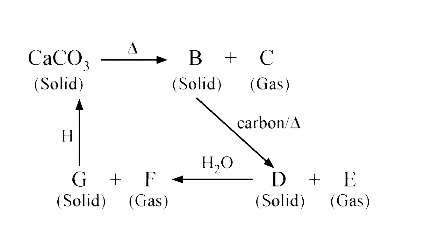Rye has two kinds of varieties: autumn and spring varieties. The correct statement about them is
Spring variety is harvested in spring while the autumn variety is harvested in autumn
Spring variety dies in spring while the autumn variety dies in autumn
Spring variety is planted in spring while the autumn variety is planted in autumn
Spring variety is grown in tropical countries while the autumn variety is grown in temperature countries
The correct Answer is:C
To solve the question regarding the two varieties of rye (autumn and spring), we need to analyze the statements provided in the options and determine which one is correct based on the characteristics of these varieties.
1. Understanding the Varieties:
- Rye has two main varieties: spring variety and autumn variety.
- Each variety has specific planting and harvesting times.
2. Analyzing the Options:
- Option A: "Spring variety is harvested in spring while the autumn variety is harvested in autumn."
- This statement is incorrect. The spring variety is typically harvested in summer, not spring. The autumn variety is harvested in late summer or early autumn.
- Option B: "Spring variety dies in spring while the autumn variety dies in autumn."
- This statement is also incorrect. The spring variety does not die in spring; it completes its life cycle by producing seeds and is harvested in summer. The autumn variety does not die in autumn either; it survives winter and resumes growth in spring.
- Option C: "Spring variety is planted in spring while the autumn variety is planted in autumn."
- This statement is correct. The spring variety is indeed planted in spring, while the autumn variety is planted in autumn to allow it to grow through the winter and resume growth in spring.
- Option D: "Spring variety is grown in tropical countries while the autumn variety is grown in temperate countries."
- This statement is incorrect. Both varieties can be grown in temperate regions, and the classification is not strictly based on tropical versus temperate climates.
3. Conclusion:
- The correct statement about the rye varieties is Option C: "Spring variety is planted in spring while the autumn variety is planted in autumn."
- Rye has two main varieties: spring variety and autumn variety.
- Each variety has specific planting and harvesting times.
- Option A: "Spring variety is harvested in spring while the autumn variety is harvested in autumn."
- This statement is incorrect. The spring variety is typically harvested in summer, not spring. The autumn variety is harvested in late summer or early autumn.
- Option B: "Spring variety dies in spring while the autumn variety dies in autumn."
- This statement is also incorrect. The spring variety does not die in spring; it completes its life cycle by producing seeds and is harvested in summer. The autumn variety does not die in autumn either; it survives winter and resumes growth in spring.
- Option C: "Spring variety is planted in spring while the autumn variety is planted in autumn."
- This statement is correct. The spring variety is indeed planted in spring, while the autumn variety is planted in autumn to allow it to grow through the winter and resume growth in spring.
- Option D: "Spring variety is grown in tropical countries while the autumn variety is grown in temperate countries."
- This statement is incorrect. Both varieties can be grown in temperate regions, and the classification is not strictly based on tropical versus temperate climates.
- The correct statement about the rye varieties is Option C: "Spring variety is planted in spring while the autumn variety is planted in autumn."
Similar Questions
The correct statement about stomata is
View Solution
The correct statement about F is
View SolutionCorrect statement about VBT is .
View SolutionThe correct statements about peptides are
View SolutionThe correct statement about dialysis is :
View SolutionThe correct statements about anomers are
View SolutionCorrect statement about calomel is
View SolutionThe correct statement about gluconic acid is
View SolutionChoose Correct statements about proteins
View SolutionSelect the correct statement about this compound.

View Solution
